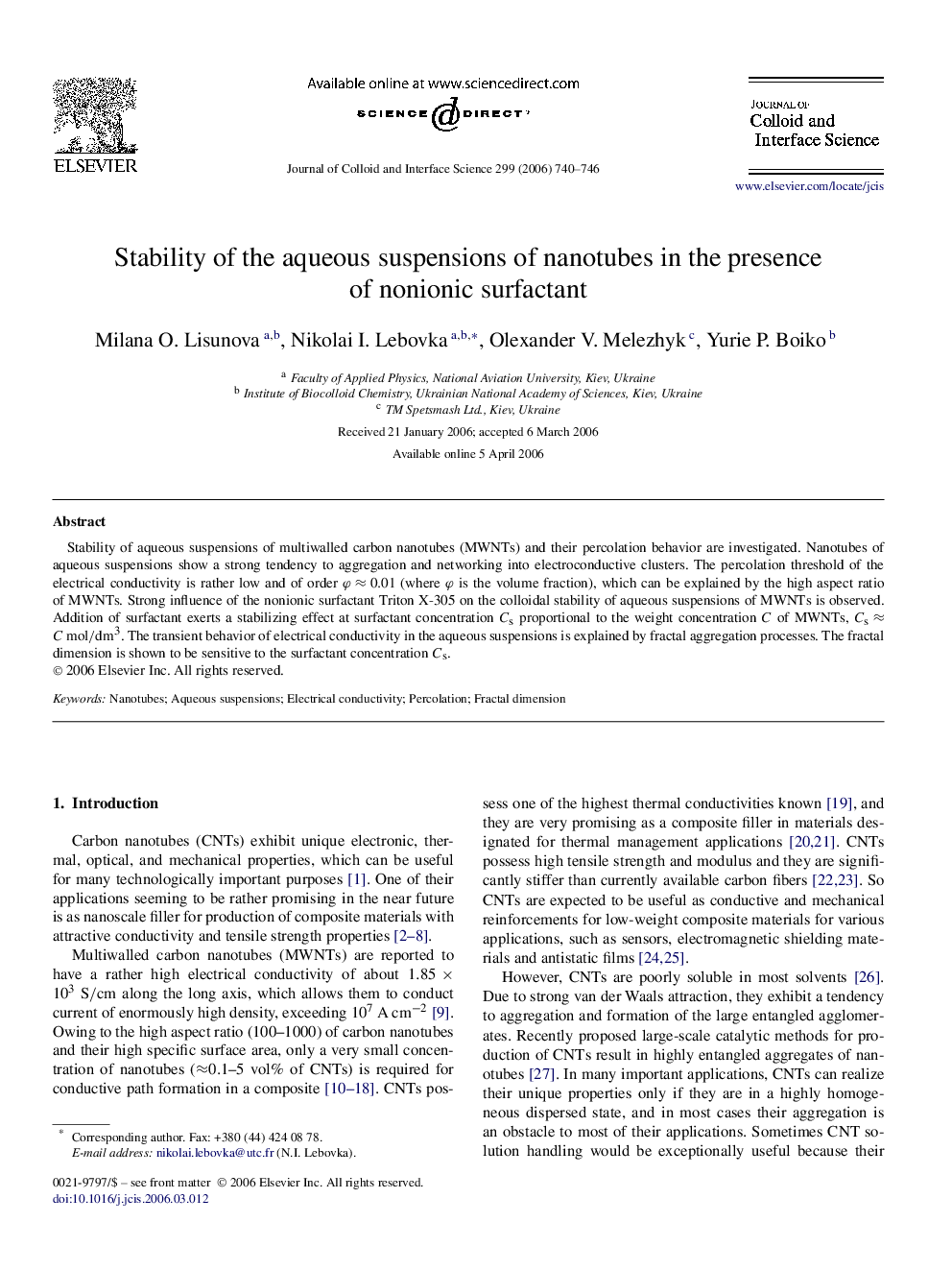| Article ID | Journal | Published Year | Pages | File Type |
|---|---|---|---|---|
| 613406 | Journal of Colloid and Interface Science | 2006 | 7 Pages |
Stability of aqueous suspensions of multiwalled carbon nanotubes (MWNTs) and their percolation behavior are investigated. Nanotubes of aqueous suspensions show a strong tendency to aggregation and networking into electroconductive clusters. The percolation threshold of the electrical conductivity is rather low and of order φ≈0.01φ≈0.01 (where φ is the volume fraction), which can be explained by the high aspect ratio of MWNTs. Strong influence of the nonionic surfactant Triton X-305 on the colloidal stability of aqueous suspensions of MWNTs is observed. Addition of surfactant exerts a stabilizing effect at surfactant concentration CsCs proportional to the weight concentration C of MWNTs, Cs≈C mol/dm3Cs≈C mol/dm3. The transient behavior of electrical conductivity in the aqueous suspensions is explained by fractal aggregation processes. The fractal dimension is shown to be sensitive to the surfactant concentration CsCs.
Graphical abstractThis work discusses the relations between colloidal stability and percolation phenomena in aqueous suspensions of multiwalled carbon nanotubes. The transient changes of electrical conductivity were explained by fractal clusters formation.Figure optionsDownload full-size imageDownload as PowerPoint slide
